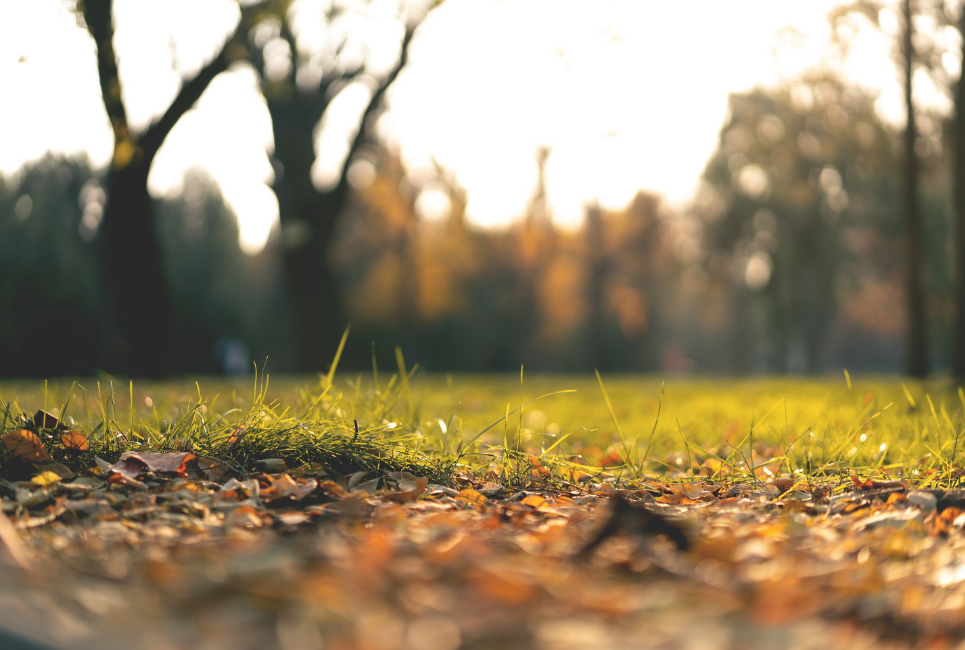- Popular Types of Bermuda Grass Explained - April 21, 2022
- When to Mow New Grass - April 18, 2022
- Best Troy Bilt Push Mower: How to Find The Right One - April 25, 2021
Who doesn’t fancy a beautiful garden in their sandy homes? There’s nothing more to complement that other than with the best grass for sandy soil with the serene beach and regional coastal nature. Impressive but only one small problem, it is a daunting task to grow beautiful gardens typically on sandy soil.
Nonetheless, doing so will have you boasting of an impressive garden on the sand. Via understanding the best grass for sand soil, you can successively achieve this.
As experts state, the best time you can grow grass seedlings is in spring, while early autumn can also be the best time. This is because roots possess ample time for root system development to prepare for winter.
It is wise to know that not all grass species can grow in sand. Even if they grow, they may never thrive. Therefore if you reside in areas with lots of sand like near beaches, you can still grow grass and still have a beautiful, appealing grass lawn.
So what’s the typical ideal best sandy soil grass? Today let’s ambush the serene sandy soil and make our gardens beautiful. You will love this, so hope on board and let’s go to the coastal regions!
What is the Structure of Sandy Soil?
With a poor water retention rate, sand soil has lessened capability to effectively supply essential nutrients to the grass.

Nonetheless, via soil amendments and constant care, you can magically spew your sandy lawn to a very impeccable garden. If you live in a sandy area, you know how difficult it is to plant anything there. Sandy soil structure is different in regards to the ability to retain water, texture, and even color.
With a pH tester for the soil, you can determine the soil’s content and quality. You can easily determine sandy soil via its feel. It has gritty textures and is composed of eroded and broken rocks. With large particles, the spaciousness in between is large, too hence rendering water retention capability very poor.
Nutrients and water are easily washed away; thus, it’s arduous to efficiently grow plants in it. Nevertheless, it doesn’t imply that there’s no hope for sandy soil. In fact, you can grow grass in them and have the best appealing lawn. Therefore you can enhance the soil’s amendments. There are ways you can improve the soil amendments of sandy soil.
Can you have grass in the sand?
Any grass type can providently grow if there are fertilizer and water in the soil. Aftermath germination, certain grasses varieties struggle to spread and grow at defined rates. The thing is sandy soil usually drains without holding moisture and nutrients for long.
The grass typically plays enormous roles in soil fertilizing. Yes, there are several blades of grass seed options that successively thrive in the conditions that sandy soil brings forth. That’s why experts recommend that you first take the soil quality a notch higher before planting and growing a beautiful garden.
How Can You Grow Grasses on Sand Soil?
- Firstly clear your yard so that you do away with large pebbles, sticks as well as any debris.
- Then have the top 4” of sand soil tilled and mixed with compost to enhance water retention and nutrients.
- Get a fertilizer with ample phosphorus content, and then put down an ample amount on the lawn for a starter.
- Thoroughly mix compost, top sand soil, and the fertilizer.
- Evenly spread the seeds with your favorable best grass for sandy soil adhering to the labeled direction.
- Take 1/8” of your local soil, and then evenly cover the seeds via running garden rake’s back through your yard.
- Adequately water the seeds daily to ascertain healthy and proper germination too.
- Don’t overwater. Doing so will wash away everything and get little germination, if not none.
What are the factors to be considered when you are getting the best grass for sandy soil?
- Where you reside
- The sunlight amount your lawn gets
- The year or season you’re planning to plant the best grass for sandy soil
- The foot’s traffic rate amount your lawn usually receives
- Your lawn’s size and needs
- Typical weather conditions
- Your reseeding plans
- Your serene aesthetic choice for the best grass for sandy soil
- Availability of water
- Your availability
Perennial and annual grasses?
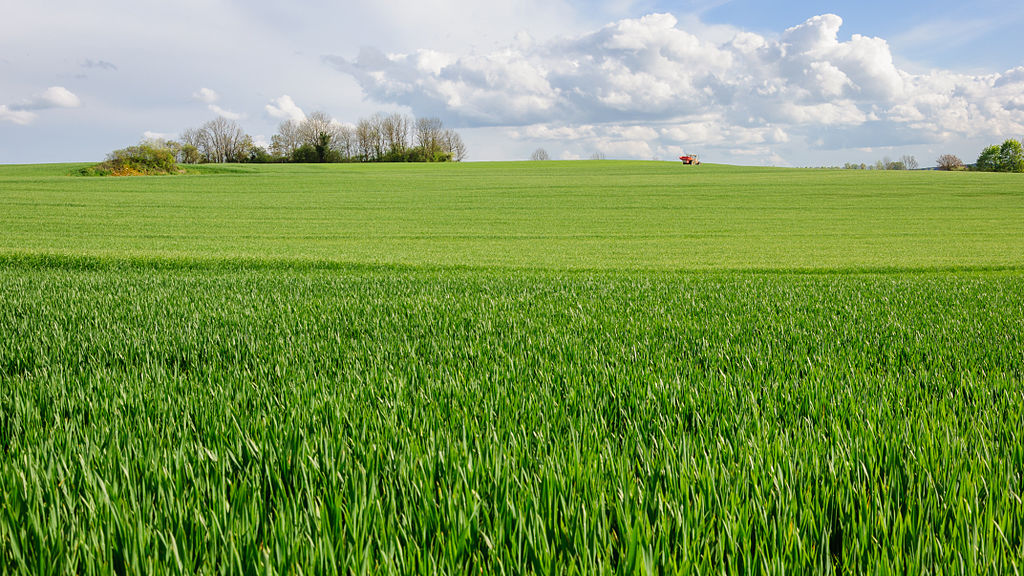
Before reviewing the best grasses for sandy soil, it is essential to know the type of grasses. First, it is noteworthy that there are numerous existential grass types. Some are referred to as perennial, while others are annual. Annual grasses imply that after a certain season ends, these plants tend to die. Therefore they will require replanting if you need them to grow back.
On the other hand, perennial implies that even though a certain season comes to an end, they can still grow back the forthcoming season. These grass types are still vital for various tasks. Let’s discuss each a bit further.
Annual Grass
The annual grasses are implemented for just a temporary covering. They’re typically used to cover any bare spots quickly as well as curb soil erosion. This is done while awaiting the usual perennial grass to grow back repeatedly. They are also used to cover soil.
In addition, they are utilized to have your lawn overseeded in the summer months. By doing so, any brown grass appearance is reduced immensely.
Perennial Grass
Grasses utilized for seed lawns are called perennial grasses. If they are established in the appropriate conditions, they will most certainly grow back. Therefore you will only go via the seeding process once in your novel lawn. With that being said, why don’t we head straight that you have been waiting for?
What is the best grass for sandy soil?
Zoysia Grass
Typically Zoysia thrives in sandy soil that’s very porous. After the roots are well established, it becomes drought tolerant owing to the fact that it grows slowly. Besides, it doesn’t highly depend on the soil’s fertility rates.
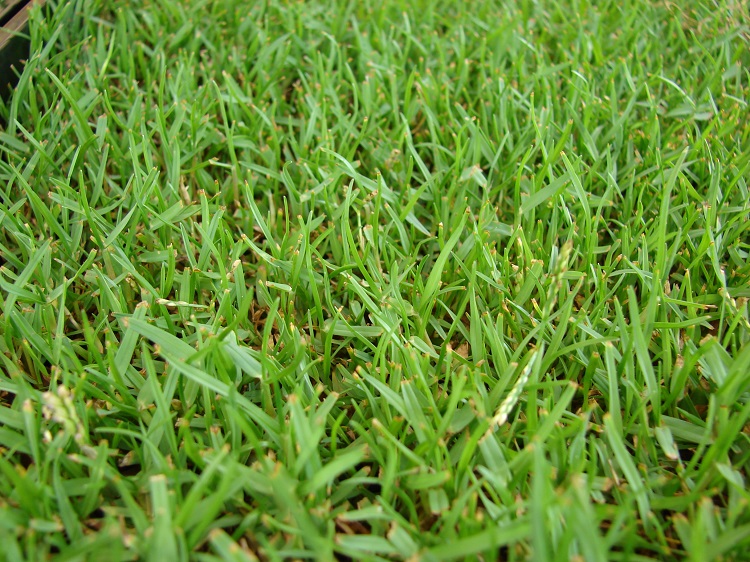
You may call it a fine accommodating standard grass which forms lush and thick lawn that’ll remain very green compared to other grasses. It beautifully greens up when it’s spring. With a high preference for sunshine, it still compromises itself on a partial shade too. Even if it is dormant, you will accept its golden brown aesthetic looks.
The best cultivar for Zoysia is Amazoy that was initially produced by the Agriculture Department of the USA. A cultivar is a plant variety that’s developed via selective breeding. Its plugs can especially grow in sandy soil because they favor its air spaces. These air spaces in sandy soil allow for easy penetration and quick development.
Features
- Can thrive in cold temperatures, partial shade, drought, and heat
- It’s a yearly round spreader. This is to imply that you need to weed, seed, feed, melt.
- It features a handy lock and edge guard technologies from Scotts.
Pros
- Low maintenance
- Flourishes well in various environments
- Tolerates exposure considerably to temperature, water, and sunlight
- It is durable
- Resistant to diseases, insects, and weed
- Aesthetically pleasing to skin and eyes
- Self-sufficient
- Fine and soft texture
- Grows slowly naturally
Cons
- It doesn’t stay green throughout; it becomes brown
- It’s not readily available
- Bit pricey
- Takes three years to completely fill out
2. Bahia Grass
With deep and extensive root systems, Bahia is a better performer in sandy soil. Requiring little fertilizer and water rate, thus maintaining, is cheap. Nonetheless, it turns brown when there’s an extended period of drought and can go dormant.

The issue is that it’s not aesthetically pleasing on a lawn because of dull color with low density and substantive growth patterns. Nevertheless, it becomes a nice preference if there’s a substantial sandy soil field amount if appearance isn’t a priority. Bahia is outstandingly heat and drought tolerant. Establishing a lawn near coastal regions with Bahia is easy as it needs little water too.
It can sustain well in sandy soil that is infertile thanks to its root systems that are deep. For this reason, you will find Bahia grass common in Southeast lawns that have sandy soils. A good Bahia cultivar is the Argentine Bahia that’s denser, more attractive, and makes denser lawn. It is also beautifully dark green.
Features
- Thrives in well-drained sandy soil
- It is a warm-season perennial grass
- Favors full sun
Pros
- Drought and heat tolerant
- Thrives in sunny places
- Has fine texture
- Cheap maintenance required
- Requires little water
- Its Argentine Bahia is a good choice.
Cons
- Prone to mole crickets
- Not dense and thick
- Poorly tolerant to shade
3. Bermuda Grass
You can grow Bermuda grass in the sand, wherein it will fairly spread quickly since it really thrives in great drainage areas. Should you be establishing your lawn near a beach, you can count on it. Nonetheless, many ask if it can grow well in shade and sand.
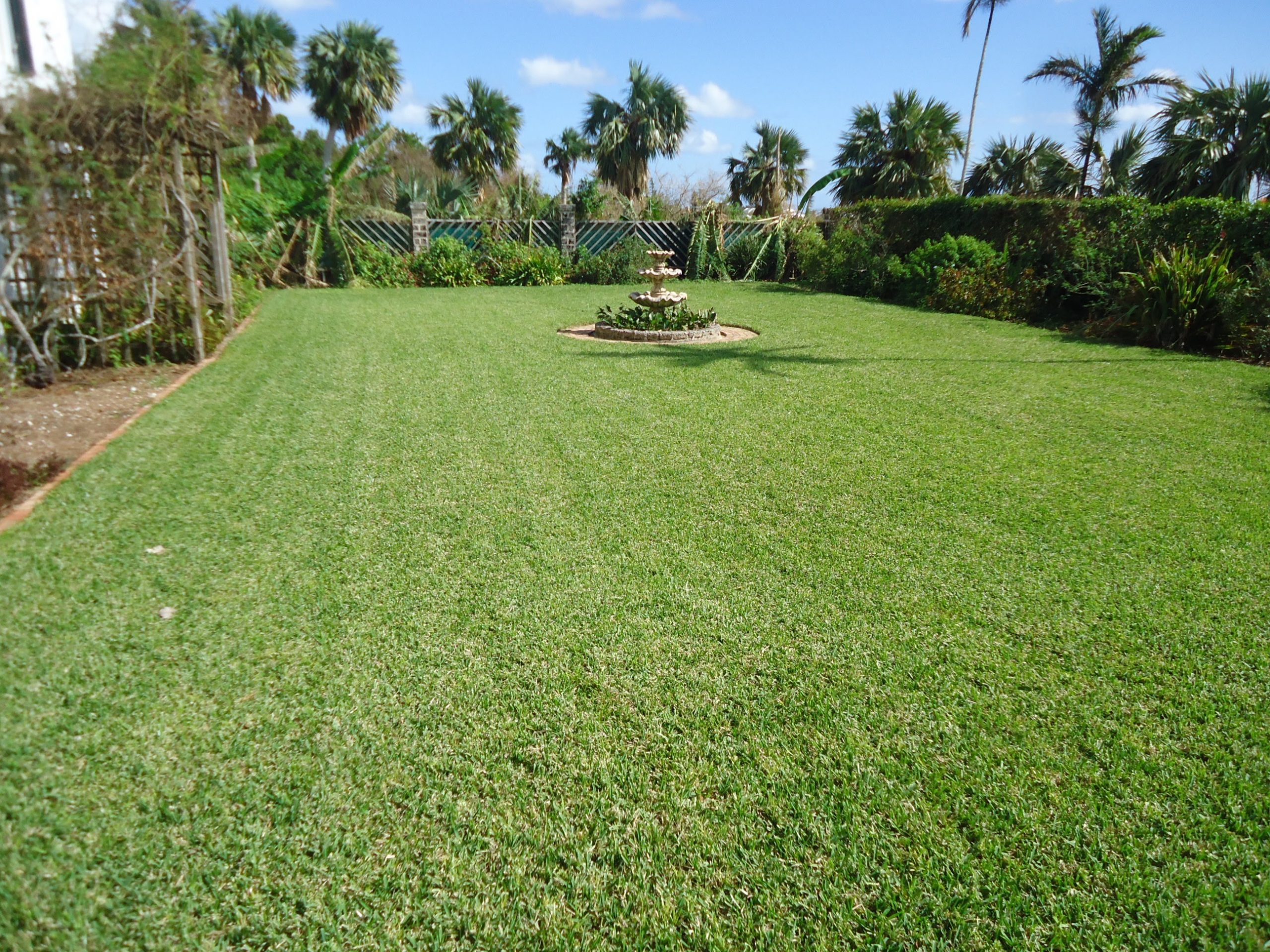
Well, it thrives well in loose sand; it also does well in various shaded places. Needing total sunlight exposure throughout, it will eventually bloom with beauty on your lawn. It doesn’t do well in shady places and hence needs sunlight thoroughly, as earlier stated. It would be best if you trimmed nearby trees before growing Bermuda turf.
That said the best Bermuda grass cultivars that can tolerate cold and drought conditions are Yukon and Riviera Bermuda. These cultivars are not very dormant and show thriving characteristics in transitional zones.
It is noteworthy that Bermuda grass also grows in even clay soil due to its typical root system and deep rhizomes. Hence they can obtain water and nutrients effortlessly. Besides, it spreads very fast, forming coverage like a carpet that helps curb moisture loss in sandy soil.
Features
- Possesses fine-bladed even texture
- Drought tolerant
- Withstands heat
- Spreads aggressively to form thick and durable lawns
Pros
- Resilient
- Effortless to grow and maintain
- Drought tolerant
- Withstands scorching heat
Cons
- Very aggressive
- Shade and cold intolerant
4. Cool-season Fescue
Should you be searching for the best cool-season sandy soil grass, your search ends with the Fescue. It’s extensively utilized in Transition Zone, wherein it’s usually known for being drought tolerant. With a very deep root system, it thrives in various chemical soil options.
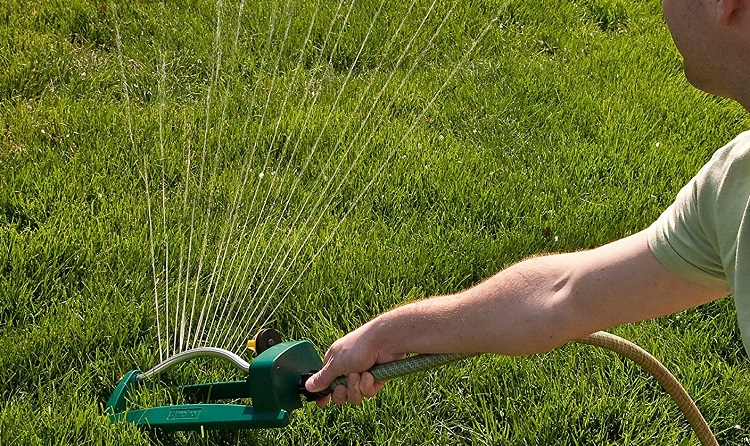
Generally, it can grow in sunshine and shade; however, it speedily grows in the shade. Its Cultivar Creeping Red Fescue can perfectly grow and thrive in sand and can be adaptive to various soil types like pebble beaches, gravels, meadows, sea costs, and sand. With good fertilizer and care, you can boast of a beautiful luxurious lawn magically grown in sandy soil. Cool huh?
Features
- Can seed up over 4000sq.ft
- Greener, thicker, quicker growth guarantee
- Designated for partial shade, full sun
- Features a 4 in 1 PLUS water Smart coating which absorbs water and protects against diseases
- Feeds required nutrients to speedily jumpstart its growth.
- Inclusive of Scotts’ best type, this aids in curbing insects and scorching heat.
Pros
- Requires low maintenance
- Can grow in various weather and earth conditions
- Deep running root systems.
- Survives well without needing irrigation since it isn’t usually thirsty
- They access greater nutrients compared to other grass varieties.
- Disease resistant
- Can withstand insects
- it is resilient and aesthetically pleasing to your skin and eyes
Cons
- Prone to pests if it is in very wet conditions
- Sometimes needs waterlogged soils
- It’s a purely cosmetic coarse customer hence not ideal for rolling on.
5. Bentgrass
Last but not least is the Bentgrass that also deserves to be on this list. This type of grass is vast in Southern lawns, where it requires highly aerated soils.
You can best grow it on beaches and sandy places. With great permeable organic and sand mixtures, you can definitely establish Bentgrass turfs.
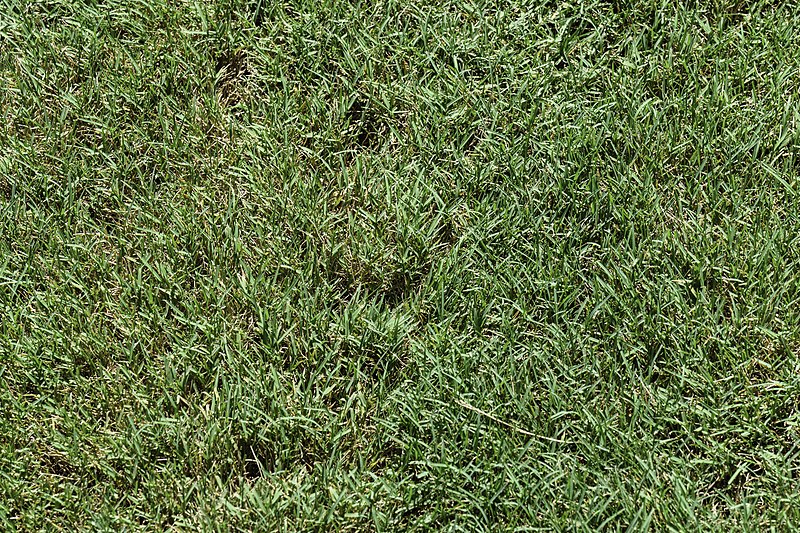
It can densely cover your cover and possesses a wealthy green color. Something peculiar about Bentgrass is that it really doesn’t need a deep-rooted system. Rather it features stolons that are overland runners to get their nutrients. You can get Bentgrass cultivars such as Couch and Buffalo easily that efficiently spread throughout. It’s something worthy to be considered in your list.
Features
- Possess rich deep green colors
- Makes impressive cool climatic putting green
- Novel putting in green turf; the sowing of up to 2 pounds per every 1000 sq.
- Has stolons rather than deep root system to get required nutrients
Pros
- Has a wealthy green color
- Extensively covers any given lawn
- Dense coverage and, if well cared for, its lush carpet coverage may interpolate and be a stunning complementary outdoor spaciousness.
- It is unique in its way yet still pleases.
- Can effectively spread thanks to its stolons
- It is beautiful and thrives in a somewhat cool, wet environmental condition.
Cons
- Its stolons and root system can only thrive in places that are usually wet.
- Cannot withstand dry and scorching conditions
- Needs constant watering if there is hot weather
FAQs
Answer: Best grass for sandy soil varieties is inclusive of Bahia, Bentgrass, Bermuda, and Fescue. These turfgrasses possess deep roots that tap nutrients and water underground. Their seeds can be used for establishing lawns near coastal areas and beaches.
Answer: Best typical sand amendments enhance water retention capacity and increase soil nutrients. Therefore you can amend sandy soil via compost and rotten manure that will ease and quicken its quality and nourish it.
Question: What is the texture of sandy soil?
Answer: Coarse sand has a gritty feel, unlike wet clay that is sticky and heavy. It is noteworthy that the soil’s texture directly impacts the soil’s reaction to various environmental conditions.
Answer: Sandy soils are generally known for holding little water and draining well. Plants that fancy lime will withstand a bit of acidic soil. Should you need to have the pH levels adjusted to less acidic rates, then go for lime as it is effective and cheap too. Limey soils, on the other hand, are expensive and more acidic.
Answer: You can best do this via amending the upper 30cm or 12” of that soil. Mix or till in higher water retention capacity organic materials.
Final verdict
As we finalize the article, it is wise to have our top pick. The Fescue grass variety is our top pick today. It requires low maintenance and survives well in various given conditions. You don’t need to irrigate it frequently as it is resilient and sufficient.
Besides, it is resilient and can tap nutrients and mineral content to nourish itself from the underground. Remember that growing the best grass for sandy soil all comes down to your preference and the requirements, as mentioned earlier in the guide.
You can still have a little time to prepare your lawn and grass seeds and consequently have a thriving sandy soil beautiful lawn. With that being said, let us know if you liked the guide by sharing it with peers. It never does you any harm by getting your hands a bit messy to beautify your home.

